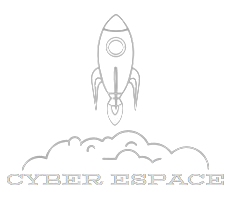 | June 3, 1999, 23 h 12 min 29 sec TU (June 4 in Canada and the USA) – A member of the crew of STS-96 photographed Station International Space while the shuttle bypassed after s’ to be detached from it. |
On May 22, 1999, at 6:49 a.m., the Discovery shuttle left Kennedy Space Center launch apron 39B in an impressive jet of flame. Lasting 9 days and 19 hours, the STS-96 mission – or flight 2A.1 to the International Space Station – provided for a rendezvous with the ISS at an altitude of 277 kilometers. Canadian mission specialist Julie Payette not only had the honor of being aboard the very first shuttle to dock at the Station, but also of being the first among Canadian astronauts to enter it.
STS-96 / 2A.1 was a Space Station logistics and resupply mission. Discovery’s dual SPACEHAB module carried internal logistics equipment and supplies to equip the Station. The Russian cargo crane, called Strela, was stowed in the ITC (Integrated Cargo Carrier) pallet cargo for deployment aboard the Station. Other payloads intended for the Station included the SHOSS (SPACEHAB Oceaneering Space System Box), an American-built crane used for the transfer of replaceable units in orbit (ORU) as well as the STARSHINE satellite (for Student Tracked Atmospheric Research Satellite for Heuristic International Networking Experiment, the student follow-up project of an atmospheric research satellite as part of the Heuristic International Networking Experiment). The objective of this project was to enable students from all over the world to follow this small satellite with reflective mirrors, to observe it at dawn and at dusk for several months, to calculate its orbit using the recorded observations and to drift the density of the atmosphere from orbit changes attributable to drag over time.
 | May 27, 1999 – Canadian Space Agency astronaut Julie Payette dons her suit for an early morning launch . |
Julie Payette, engineer and jet pilot for the Canadian Armed Forces, joined the Canadian Astronaut Program in 1992. She underwent her astronaut training in the United States from 1996 to 1998. She then worked on technical issues in robotics, an area of particular interest to Canada. During its 10-day mission, Discovery delivered four tonnes of supplies and logistics equipment to the International Space Station in preparation for the arrival of the first crew of stationauts in November 2000. Shuttle Discovery landed on runway 15 of the Kennedy Space Center on June 6, 1999 after having described 153 orbits and traveled 6 million kilometers in 235 hours and 13 minutes.
STS-96 was Shuttle Discovery’s 26th flight and the 94th space-launched mission since the Shuttle program began in April 1981. After Discovery’s departure to Earth, the Station was still a structure. not piloted.
-
Recent Posts
- ASSEMBLY PHASES
- Basic central structure, Mobile transporter (MT)
- CANADARM 2
- Destiny module
- Exit airlock (End of the initial phase)
- Expedition 1
- Expedition III, Logistics
- Expedition IV, Logistics
- External structure
- Home
- Logistics
- Logistics II
- Logistics III
- MPLM Leonardo
- MPLM Mobile Base (MBS)
- MPLM Raffaello and Canadarm2
- NORTHERN LIGHTS
- Solar panels
- Unity module
- Zarya Control Module
- Zvezda module
Archives
Categories
Meta
